WAIPAHU, Hawaii, Nov. 11, 2025 /PRNewswire/ -- Keiki Smiles of Leeward proudly announces the opening of its new pediatric dental practice in Waipahu, Hawaii. Led by Board-Certified Pediatric Dentist Dr. Audrey Navarro Rawson, the new office is dedicated to providing compassionate, comprehensive dental care to infants, children, adolescents, and patients with special health care needs in a fun, family-friendly environment."We're so excited to open the doors of Keiki Smiles of Leeward and welcome families from across Oahu,&q...
WAIPAHU, Hawaii, Nov. 11, 2025 /PRNewswire/ -- Keiki Smiles of Leeward proudly announces the opening of its new pediatric dental practice in Waipahu, Hawaii. Led by Board-Certified Pediatric Dentist Dr. Audrey Navarro Rawson, the new office is dedicated to providing compassionate, comprehensive dental care to infants, children, adolescents, and patients with special health care needs in a fun, family-friendly environment.
"We're so excited to open the doors of Keiki Smiles of Leeward and welcome families from across Oahu," said Dr. Audrey Rawson. "Our mission is to help keiki build a lifetime of healthy smiles by making every dental visit comfortable, educational, and positive. We've designed our office to make kids feel at home while giving parents confidence in the quality of care their children receive."
Keiki Smiles of Leeward was established in 2025 by Dr. Rawson, a Diplomate of the American Board of Pediatric Dentistry and Chief of Dentistry at Shriners Hospital Honolulu. Before specializing in pediatric dentistry, Dr. Rawson worked as a preschool teacher—an experience that inspired her approach to dentistry with empathy, patience, and education. The practice represents the next evolution of pediatric dental care in Waipahu, combining decades of expertise with advanced technology and a commitment to community wellness.
"We believe the dental office should be a place of discovery, not dread. Our guiding philosophy is to combine expert clinical care with genuine compassion, ensuring every child—and every parent—feels safe, respected, and excited to return." Dr. Audrey Navarro Rawson
The new practice continues a long tradition of trusted pediatric dentistry in the Waipahu Professional Center. The Keiki Smiles of Leeward team focuses on prevention, early intervention, and minimally invasive care to ensure children have a strong foundation for lifelong oral health. The practice also provides specialized care for children with developmental or medical needs, maintaining an inclusive, welcoming environment for every patient.
Keiki Smiles of Leeward provides the following services:
About Keiki Smiles of Leeward
Keiki Smiles of Leeward is a locally owned pediatric dental practice serving Waipahu, Oahu, and surrounding communities, including Waikele, Kapolei, Ewa Beach, and Pearl City. The practice offers a compassionate, patient-focused approach rooted in prevention, education, and trust-building with every family.
For more information or to schedule an appointment, visit https://www.keikismilesleeward.com or call (808) 671-0055. Keiki Smiles of Leeward is located at 94-229 Waipahu Depot Street, Suite 501, Waipahu, HI 96797.
View original content to download multimedia:https://www.prnewswire.com/news-releases/keiki-smiles-of-leeward-announces-opening-of-pediatric-dental-practice-in-waipahu-hi-302611992.html
SOURCE Keiki Smiles of Leeward
You May Also Be Interested In

 808-207-8558
808-207-8558




 Service Areas
Service Areas























